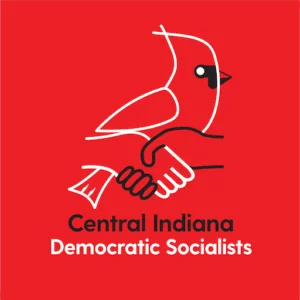
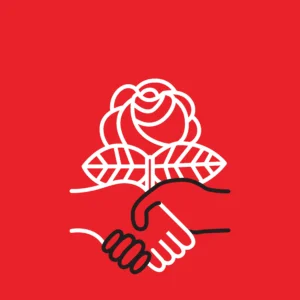
This Month — Fight Fascism, Build to May Day
Our National Labor Commission is fighting fascism and building worker power! Throughout April, we’re building up to International Workers’ Day. This week, join us at two events to kick this off:
- Mass call with the Chicago Teachers Union (CTU) on Thursday 4/3 at 5pm ET/4pm CT/3pm MT/2pm PT
- Saturday, 4/5 Hands Off! in-person actions against fascism across the country
International Workers’ Day is also known as May Day. On May 1, 1886, during a period of extreme wealth inequality, social oppression, and political corruption, hundreds of thousands of workers across the US withheld their labor and took to the streets in a general strike against industrial barons, demanding an eight-hour work day.
Nearly 140 years later, unelected billionaire oligarchs like Elon Musk are seizing control of our government. The bosses are using state power against the working class to suppress opposition, consolidate power, and destroy our ability to fight for a better life.
But working people aren’t going anywhere. DSA Labor is building power for the short and long term, not only to stop authoritarianism but to transform our society into one in which workers are in the driver’s seat. We need you to join us in building towards May Day 2025, May Day 2028, and beyond.

Here’s how you can join us to fight oligarchy and build up to this year’s International Workers’ Day.
 Thursday, 4/3, 5pm ET/4pm CT/3pm MT/2pm PT: CTU National Call for May Day 2025
Thursday, 4/3, 5pm ET/4pm CT/3pm MT/2pm PT: CTU National Call for May Day 2025
Join the Chicago Teachers Union (CTU) and friends for a national mass call to learn how to build May Day 2025 to be as big and powerful as possible.
 Saturday, 4/5: “Hands Off” National Day of Action
Saturday, 4/5: “Hands Off” National Day of Action
Join a growing nationwide coalition of labor and community partners to say: Hands off our democracy, our rights, our livelihoods, and our neighbors!
 Tuesday, 4/8: “Kill the Cuts” National Day of Action
Tuesday, 4/8: “Kill the Cuts” National Day of Action
Stand in solidarity with workers in education, research, and healthcare to demand NO cuts to education and life-saving research.
 Sunday, 4/13, 8pm ET/7pm CT/6pm MT/5pm PT: Building Sanctuary Unions Training Session
Sunday, 4/13, 8pm ET/7pm CT/6pm MT/5pm PT: Building Sanctuary Unions Training Session
DSA’s National Labor Commission has partnered with DSA’s International Migrant Rights Working Group to host member training sessions. Learn how to organize within your union for an American labor movement where immigrant workers can find protection and build power.
 Tuesday, 4/29: Fight Oligarchy, Build to May Day Mass Call
Tuesday, 4/29: Fight Oligarchy, Build to May Day Mass Call
Join us as we gear up for May Day 2025! We will hear from labor organizers, immigrants rights activists, and chapter leaders about why workers everywhere need to stand up and fight back against the attacks on our unions, rights, and essential services, and how you can join in the fight today and in the weeks and months ahead.
 Thursday, 5/1: May Day 2025
Thursday, 5/1: May Day 2025
Save the date to join hundreds of thousands in the streets for International Workers’ Day.
And our next quarterly “Workers Organizing Workers” Training starts on Monday 4/7 at 8pm ET/7pm CT/6pm MT/5pm PT! This three-part training series is great for anyone interested in getting a job and organizing in a strategic industry. The training covers the basics of finding these positions, talking to coworkers, and being part of a movement to bring workplace democracy to some of America’s largest employers.
If you’d like to get more involved with the National Labor Commission, the body of DSA members active in the labor movement, apply here! We have opportunities for members interested in strike support, Palestinian solidarity, educator organizing, and more!
The post This Month — Fight Fascism, Build to May Day appeared first on Democratic Socialists of America (DSA).
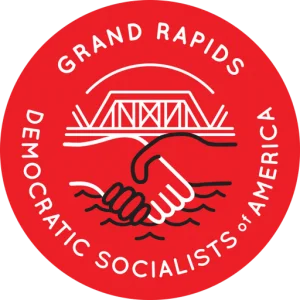

Call your Reps and Tell Them to Let Trans Kids Play Sports
On March 12th, eight state Democrats in Michigan voted for an anti-trans resolution that would hurt trans kids in schools.
HR40 is a non-enforceable resolution that strongly encourages the Michigan High School Athletic Association to discriminate against trans women by following Trump’s executive order to ban trans-women in women’s sports.
Despite it being non-enforceable, this resolution would lead to increased harassment and discrimination towards trans children who just want to play sports with their classmates.
The eight state Democrats who voted for this resolution are Rep. Alabas Farhat, Rep. Peter Herzberg, Rep. Tullio Liberati, Rep. Denise Mentzer, Rep. Reggie Miller, Rep. Will Snyder, Rep. Angela Witwer, and Rep. Mai Xiong.
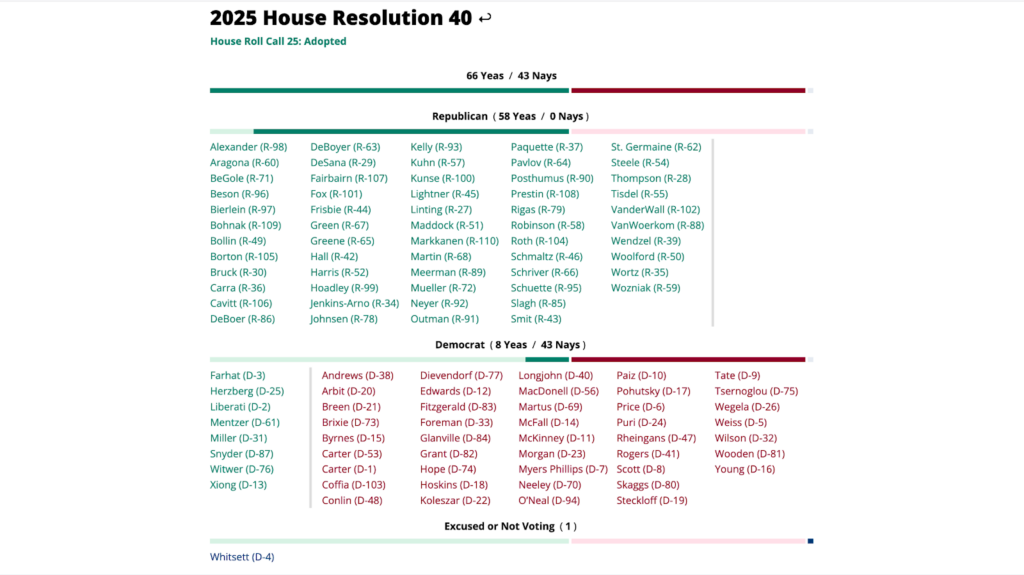
Call your state Representative and let them know how you feel about their vote! You can find your state Representative here!
If your state Representative voted yes for this resolution, call them to express how disappointed you are and tell them they need to stand for trans rights or you will be voting against them in the next election.
If your state Representative voted no for this resolution, call and thank them for siding with trans people. Encourage them to continue their support and to speak up for the rights of trans people. We need as many people in positions of power to be on our side.
Keep in mind, your state representative does not represent anywhere close to as many people as your US Congress representative. Your call could very well sway them to support trans people going forward, even if they are Republican. In Montana, 29 Republicans changed their mind on an anti-trans bill after Reps. Zooey Zephyr and SJ Howell gave impassioned speeches. This goes to show that it is possible to sway state Republicans.
The whole situation was handled so maliciously. Speaker Pro Tempore Rachelle Smit (R-43), a far-right Republican who believes the 2020 election was stolen from Trump, kept cutting off the speeches of Democrats so that her Republican colleagues could speak. The vote was then rushed through the House without letting Democrats finish their speeches. Erin in the Morning provides a copy of the whole situation here.
We must all stand for the rights of trans people!
The post Call your Reps and Tell Them to Let Trans Kids Play Sports appeared first on Grand Rapids Democratic Socialists of America.

Your National Political Committee newsletter — Fascism is Capitalism in Decay
Enjoy your March National Political Committee (NPC) newsletter! Our NPC is an elected 18-person body (including two YDSA members who share a vote) which functions as the board of directors of DSA. This month, get involved with the Mutual Aid Working Group, join AfroSoC, apply for the Growth & Development Committee Steering Committee, and more!
And to make sure you get our newsletters in your inbox, sign up here! Each one features action alerts, upcoming events, political education, and more.
- From Our Co-Chairs — Fascism is Capitalism in Decay
- Growth & Development Committee Steering Committee Application: Open Through 4/1
- State of DSA Reports — Listening Session #2
- MAWG All Members Meeting for Spring 2025
- AfroSoC is BACK with a New Executive Committee!
- Extension of National Political Education Committee Application Window
- Apply for the National Budget & Finance Committee
- Fundraising Committee Office Hours
From Our Co-Chairs — Fascism is Capitalism in Decay
“Society does not consist of individuals, but expresses the sum of interrelations, the relations within which these individuals stand.” – Karl Marx, The Grundrisse, 1857
Jumping headlong into dialectical and historical materialism might not be the usual theme of our newsletters, but in this era of cartoon supervillians like Donald Trump and Elon Musk, we think it’s worth remembering that, while these Uncle Pennybags caricatures are the most prominent faces launching “shock doctrine” attacks on our already tattered social safety net, they are simply extra-vulgar representatives of the forces of capital that have always been exploiting and oppressing the working class.
In many ways, it’s useful to point to Elon Musk, an unelected billionaire and the richest man in the world, hooting and hollering his way through the dissolution of our children’s schools and our parents’ social security. He makes the contradictions of capitalism clearer and more terrifying than they have been in our lifetimes. While Musk initially seemed to offer a liberal, technocratic, very online veneer to the ascendant new green tech sector of capital, socialists called bullshit years ago on this union-busting capitalist. The mask has now come off. Musk is a scion of global apartheid, as he makes explicit his sympathies with fascism that justify the large-scale labor exploitation and imperialist resource extraction that underlie his super-profits.
As socialists, we are disgusted to see so little pushback to Trump’s amped-up second-term agenda from their neoliberal capitalist political “opposition” in the Democratic Party, nor from the donor-controlled institutes of higher education that are rolling over one by one to hand over students like Mahmoud Khalil to ICE thugs, nor from the hospitals that are pre-emptively refusing gender-affirming care for our community members who are in genuine need. We must remember that, for all the grotesque buffoonery that Musk and Trump (and their rogue’s gallery) put on display, when it comes down to it, they’re representing their class interests, and the ruling class at large seems to be just fine with it.
Fascism is capitalism in decay, and November’s election peeled off a bandage that covered a bone-deep rot. But as socialists, we know the cure. The working class is the agent of change. We outnumber the capitalists (and the goons who do their dirty work in institutions of power) by orders of magnitude, but we can only fight back if we’re organized in huge numbers across capitalism’s forced divisions, and that’s what we’re doing. While Democratic Party elites suggest it’s time to stand down, we know we must fight for full-throated demands by ordinary people for everything we need not just to survive, but thrive.
DSA chapters across the country are working alongside the Federal Unionists’ Network to organize federal workers to push back against the dismantling of their various agencies. We’re showing up in city council meetings to demand that sanctuary laws be passed to protect queer and trans members of our community. We’re standing with teachers and postal workers across the country to fight for education and the right to access information, and to protect and expand good union jobs. We’re fighting back against hospitals as they refuse to offer gender-affirming treatment and we’re demanding that universities across the country offer safe learning environments where students don’t have to fear being snatched by ICE.
Our solidarity doesn’t stop at our borders, either; we continue to fight for Palestinian liberation and safety, against escalating military action in Yemen, against expansion of US military bases across the Pacific, against unjust embargoes that punish the working people of countries around the world, and alongside our comrades everywhere as they organize antifascist strategies for mass politics against a globally-ascendant right wing.
We are proud to be among the convening organizations of the National March on Washington on April 5 to stop the US-Israeli genocide in Gaza — join us in DC if you can! The moment could not be more critical, and it is our responsibility to fight back against the Trump administration’s attempts at repression and come out in massive numbers.
We are stronger when we are organized, and that means putting ourselves into motion to fight for common socialist goals. It means organizing our time, our talents, and our resources. It means honing ourselves into socialist organizers who are ready with strong analysis and the organizing tools to put that analysis into real on-the-ground wins. It means building an enormous, strong, and flexible political instrument that’s ready to take on the capitalist class on every terrain: at the ballot box, the workplace, our homes, our broader communities, and the streets.
If you’re not plugged into your DSA chapter yet, we encourage you to get involved today, whether it’s offering your time and skills to local work or a national committee (lots of fresh opportunities for the latter are below!), running for delegate for DSA’s biennial convention this summer, or even simply increasing your dues payment by a few dollars per month to help keep our organization stable and funded.
We will see you in the fight!
Growth & Development Committee Steering Committee Application: Open Through 4/1
The Growth & Development Committee is seeking new applicants for its Steering Committee! Nine member leaders will be appointed by the National Political Committee to direct GDC’s work guiding membership growth, retention, chapter support, training and more. Applications will be open until 11:59pm PDT April 1st. Apply here.
State of DSA Reports — Listening Session #2
The Growth and Development Committee is launching a series of Listening Sessions as part of its State of DSA Reports project to bring organizers together to share experiences, reflect on our victories, and identify ways to tackle the challenges we all face.
Our second session is Thursday April 3rd at 8:30pm ET/7:30pm CT/6:30pm MT/5:30 PT, and will focus on activation and politicization. Once a member is engaged, what does continual development look like in your chapter? We’ll be talking through political education, leadership development, and democratic processes — come tell us what you think!
MAWG All Members Meeting for Spring 2025
DSA’s Mutual Aid Working Group (MAWG) has returned! We are here to help members and chapters organize mutual aid projects and offer our guidance with incorporating into the organizing work already happening across DSA. We believe in mutual aid as a positive force within DSA’s organizing work and hope to see it play a larger role in our impact as an organization. Our first all-member meeting of the year is coming up on Thursday April 3rd at 8:30pm ET/7:30pm CT/6:30pm MT/5:30pm PT! New and returning members are welcome as we discuss the future of mutual aid in DSA and hear from members on how MAWG can be of help!
AfroSoC is BACK with a New Executive Committee!
On February 28th, with 46 votes cast, the AfroSoC Caucus elected a new Executive Committee for 2025! Congratulations to Ciné J., Mary B., AJ W., Abel A., Syjil A., Jane M., Christopher W., Michael G., and Nxongotelo M. on their leadership!
Are you a BIPOC DSA member looking to engage with AfroSoC? Get involved by filling out our interest form to join our Slack, enlisting your local AfroSoC chapter, or signing up for a Working Group or Committee to help rebuild our national activities. Plus, don’t miss our Quarterly General Body Meeting on Thursday 4/10 at 7pm ET/6pm CT/5pm MT/4pm PT — Zoom link coming soon!
Extension of National Political Education Committee Application Window
The National Political Education Committee is seeking members with experience as educators both inside and outside of DSA to help us expand our national political education programs and provide chapters with up-to-date resources for their own local programs. We have extended the previous application deadline to April 6th, and encourage you to apply and pass the application along to your chapter’s poli-ed and/or communications team, as well as comrade-educators in your circles. Please see the application form for further details. If you have any questions or concerns, feel free to reach out to the Political Education Committee at politicaleducation@dsacommittees.org.
Apply for the National Budget & Finance Committee
DSA’s National Budget & Finance Committee is seeking applicants to fill a limited number of seats on the committee. Applications are due by April 7, 2025.
Budget & Finance is the national committee that works with the national Treasurer and staff to oversee our financial strategy, guide the NPC and Convention in allocating resources, and ensure transparency in our budgeting processes. It is a small working committee made up of members who have special interest or expertise in financial matters, budgeting, and related topics. The committee is currently starting work on the 2025 budget and planning for our next national convention.
Meetings are weekly, currently on Tuesdays at 5:30 ET. Due to the importance and specific required expertise for this work, potential committee members will be screened for credentials, background, and experience. If you’re a numbers nerd, current or ex-chapter treasurer, or have other finance/budgeting experience through DSA or externally, we encourage you to apply!
Fundraising Committee Office Hours
Join DSA National Development Director Tiffany and members of the Fundraising Committee on Tuesday, April 8th, 7:30pm ET/6:30pm CT/5:30pm MT/4:30pm PT for Fundraising Office Hours! We’ll keep a call open for any chapter leaders to ask questions about fundraising, including how to get ready for the 2025 DSA National Convention and how to support your chapter’s local work. Sign up here.
The post Your National Political Committee newsletter — Fascism is Capitalism in Decay appeared first on Democratic Socialists of America (DSA).
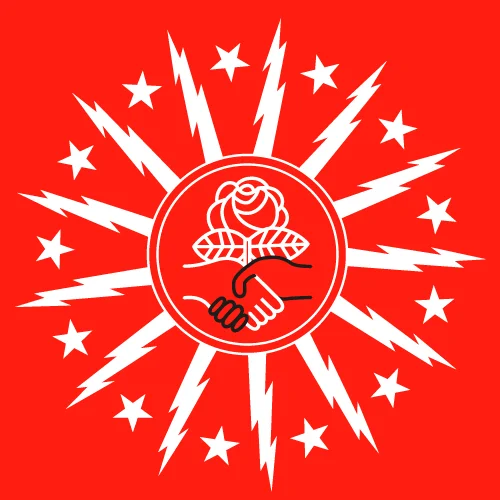

Local Corporate Elites use the Buffalo-Niagara Partnership to Present an Immoral Inadequate Agenda to Politicians
Buffalo DSA’s Response to Buffalo Niagara Partnership’s 2025 Advocacy Agenda
We are a volunteer effort of class-conscious Western New Yorkers who have researched and organized against the BNP.
Here’s what you need to know:
Buffalo-Niagara Partnership stands for expensive, private healthcare on behalf of their health insurance company donors and board members.
Universal, public healthcare is what we need as people, patients, caregivers, and workers.
Unlike the “Advocacy Agenda” states, the child tax credit is not a solution to the childcare crisis.
Groups who might be actually concerned about the workforce should use their political power to advocate for direct cash payments to families to help with childcare costs, and a universal childcare system of well-paid caregivers.
BNP warns about the”benefits cliff” that means-testing creates, while advocating against universal policies that would solve the problem.
The solution is a state that provides support to all of us and encourages shared responsibility.
They want blank checks for their friends to make superficial improvements to our city while our existing housing issues worsen.
What we need is Good Cause Eviction and measures for Rent Control to start. We ultimately need public, social housing and anti-discrimination in New York.
BNP’s genius development ideas include a push for Buffalo to take part in over-investment in Al centers that fry our power grid and have little potential for actual adoption, while opposing environmental progress.
Building a tech bubble locally is an oversight that will lead to job loss in the future.
We have all the productive capacity we need to thrive, but the power is held in the wrong hands.
BNP’s scarcity mindset around taxes, as well as desire to protect and expand the private sector at great cost to the public, reflects their elite members’ preferences – not the scale and potential of New York’s economy.
A better Western New York is possible – if we get educated, build the independence, and political courage to prioritize the needs of working people.
The Butlalo-Niagara Partnership is structurally incapable of undertaking, or even guiding, such a task.
Political leaders should be held to account for their collaboration with them.
Take action with us:
- Read our full reports and share our materials – we are a volunteer effort!
- Sign our Back Off, BNP open letter exposing the relationship between our local corporate elites and politicians!
- Use our tools to contact your rep and demand they bring universal healthcare to a vote in NY this year!
- Share your healthcare story with us. Lets flip the script on the corporate for-profit care industry.
- Union Members: Advance a resolution in your union to support universal healthcare.


Free Mahmoud Khalil – Protect Student Activists
Mahmoud Khalil, Columbia University activist, was unjustly arrested by ICE on March 8th in what is a clear attack for his pro-Palestinian work on campus in the spring of 2024.
Mahmoud was forcibly abducted from his New York apartment and now detained in Louisiana. ICE even threatened his wife with arrest, a US citizen who is 8 months pregnant. The Trump admin is attempting to revoke Mahmoud’s green card and deport him without criminal charges and without providing evidence.
In a post on Truth Social, President Trump applauded ICE for this arrest and promised more to come. In an earlier post, he claims they will freeze all federal funding for any school, colleges, or universities that allow so-called “illegal protest.” Coming from the guy that pardoned even the most violent of the January 6th Insurrectionists, we know this isn’t about legality but simply silencing speech he disagrees with.
First they came for Mahmoud Khalil and I’m gonna fucking say something!
Our comrades in NYC DSA have set up a few ways for you to take action now!
Call your members of Congress – using the provided script, demand action to secure Mahmoud’s release and protect the rights of activists.
Email your elected officials – urge them to take immediate action to stop the targeting of student activists and immigrants.
Let’s make one thing clear: we will not allow our communities to be silenced or terrorized. The fascists in the White House are hoping this will have a chilling effect on political speech and protest. And that’s why we need to be fired up!
The post Free Mahmoud Khalil – Protect Student Activists appeared first on Grand Rapids Democratic Socialists of America.
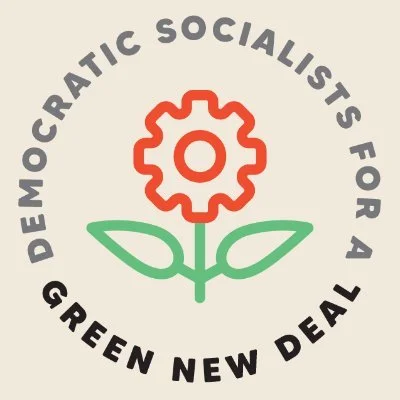

Organizing for a Green New Deal under Trump 2.0
When we laid out our theory of power in 2022, we were organizing for a Green New Deal in a neoliberal Democratic administration over which the Left had limited power. We knew the following four years would be more of the same if we were lucky; now, we find ourselves at the conjuncture of Trump 2.0, which will be worse. Already, ICE is raiding homes and workplaces and chapters are in the streets trying to protect trans people and workers, while Democrats cower or criticize Trump for low deportation numbers. The Administration has launched a trade war, frozen research grants, escalated attacks on immigrants and transgender people, and started purging federal workers, with Elon Musk in charge of gutting the administrative state. Basic environmental protections like the Clean Air Act are under threat, even as we barrel past international emissions targets.
Trump has already issued an executive order to halt future Inflation Reduction Act (IRA) spending, an unconstitutional attempt to reappropriate what Congress has already approved that will be challenged in court. As flawed and inadequate as it is, Biden’s IRA, still in its infancy, has just begun to bear fruit as a weak “green” industrial policy. Though unraveling the IRA would undermine job creation and economic growth in key Republican districts, that material fact may not be enough to save the legislation from forces dead-set on stopping our transition from fossil fuels to clean energy, even via mostly private means, and committed to precluding the state from acting on climate mitigation and adaptation. So far the direct pay provision of the IRA, a key component of the Build Public Renewables Act passed by some of New York state’s DSA chapters, remains unscathed.
Although the full fate of the IRA is uncertain, we already know that compromise legislation has not spurred the kind of green economic populism this moment requires. As Thea Riofrancos and Daniel Aldana Cohen pointed out, our vision for a socialist Green New Deal goes far beyond the hybrid “Prius economy” promised by legislation like the IRA. The Prius economy is driven by the private interests of big capital, which push investment—including federal subsidies and loans—towards cars and suburban housing and electric jets. We intend to change that direction, fighting for public investment in public goods like mass transit, green social housing, parks and trails, and healthy schools, all built and operated with good union jobs.
During the next four years, DSA will continue to fight for those policies at the state and local level. Because the federal terrain is more hostile, we think the task before us remains to build local power with legislative, labor, and electoral organizing in order to expand public services to tackle both the cost-of-living and climate crises.
Building with Labor
DSA’s long-term orientation towards rebuilding the labor movement is at the heart of our strategy. Of course, Green New Deal organizing can help do that, but it’s also clear that labor power is essential to winning climate policy at the scale and speed needed. We encourage GND and labor organizers in chapters to support workers bargaining for fair contracts and walking the picket line, while we help them build enduring coalitions with labor to win local changes that, in turn, create union jobs, enabling further organizing. This is why every B4P campaign places just transition demands and the creation of green union jobs at the center of the strategy. This process of changing state terrain so it is more conducive to working class organizing – while also engaging in direct working class organizing – is key to class formation in this moment, and a role DSA is uniquely capable of filling.
We’ve already seen bargaining for the common good used to win Green New Deal demands in LA, where United Teachers Los Angeles won provisions for solar panels, green spaces, and electric school buses in their last round of contract negotiations. And the organized Left has the first real opportunity to organize a general strike on May Day 2028, with the UAW calling for unions to align their contract expiration dates so the labor movement can take action as a whole. The UAW also happens to be a model for the kind of rank-and-file reform that needs to spread throughout the labor movement. Through their contract negotiations they are setting the terms of the EV transition, and creating space for other climate demands, like a 32-hour work week. Our long term project of rebuilding the labor movement continues, and Green New Deal unionism can help us win the future the working class deserves.
Winning State Power
The GNDCC originally launched Building for Power partly as a way to build on electoral organizing and wins. Coalitions led by DSA, labor unions, and DSA electeds can fight for different elements of GND policy. We recognize this timeline can become vague and/or lengthy, but we also understand that electoral organizing and labor organizing, led and cohered by socialists, can build unique forms of pressure on state actors while also accelerating class formation in the local context. We also think that building and operating such broad-based but complex coalitions can help develop strong, skilled DSA chapters that can lead on not only winning GND policy, but responding politically and materially to the climate crises ahead. And we think it’s clear that mass coalitions with labor power can be a major bulwark against the right wing locally and nationally.
Responding to crises
DSA chapters are responding to the immediate threats their communities face under Trump 2.0, and members will continue to be called on to protect people and build networks of solidarity when disaster strikes. But the connections generated in disasters must outlive the moment of crisis. DSA’s task is to organize those relationships into lasting working class solidarity to address the political causes of crises.
Ecosocialist formations can help their chapters respond to moments of crisis, while also preparing them for the future, by Building for Power. We have witnessed devastating hurricanes and wildfires in just the past four months, requiring rapid response from DSA chapters who will spend months helping their communities rebuild. Strong Building For Power campaigns can pivot to disaster response while also fighting to change the conditions that cause these crises in the first place, with policies like green social housing, public power, mass transit, and more. As we respond to urgent threats in the coming years, we cannot afford to lose sight of the long-term horizon: beyond reacting strategically in moments of disaster, our goal is to actively build the future we deserve.
Building toward the Future
Restructuring our economy by returning the wealth created by our ecosystems and our labor back to us, where it rightfully belongs, is the work of our lifetimes. The crises we face are urgent, yet the public goods we are working to expand take years to build out, and there is no time to waste. An organized Left must keep pushing on the local level, where there is still ample opportunity for wins that build working class power and green public sector capacity.
Already, we’re seeing Trump 2.0 take a more rapacious direction, precipitating emergencies at multiple levels. In this setting, it is true that chapters may become stretched responding to immediate demands more pressing than new bus lanes. But our view is that, through B4P campaigns undertaken now, chapters can build the leadership and organizing skills and expand the outreach and recruitment that will be essential to responding to whatever Trump dishes out. And the GNDCC will be there to support chapters that need to pivot their work to meet the moment.
Join our upcoming campaign huddles if you are interested in creating a Building for Power campaign in your chapter:
Building the Green New Deal: Where We’ve Been, Where We’re Going
Wednesday, March 26, 2025 8:00 PM • Virtual
Building for Ecosocialist Power under Trump/DOGE
Wednesday, April 23, 2025 8:00 PM • Virtual

